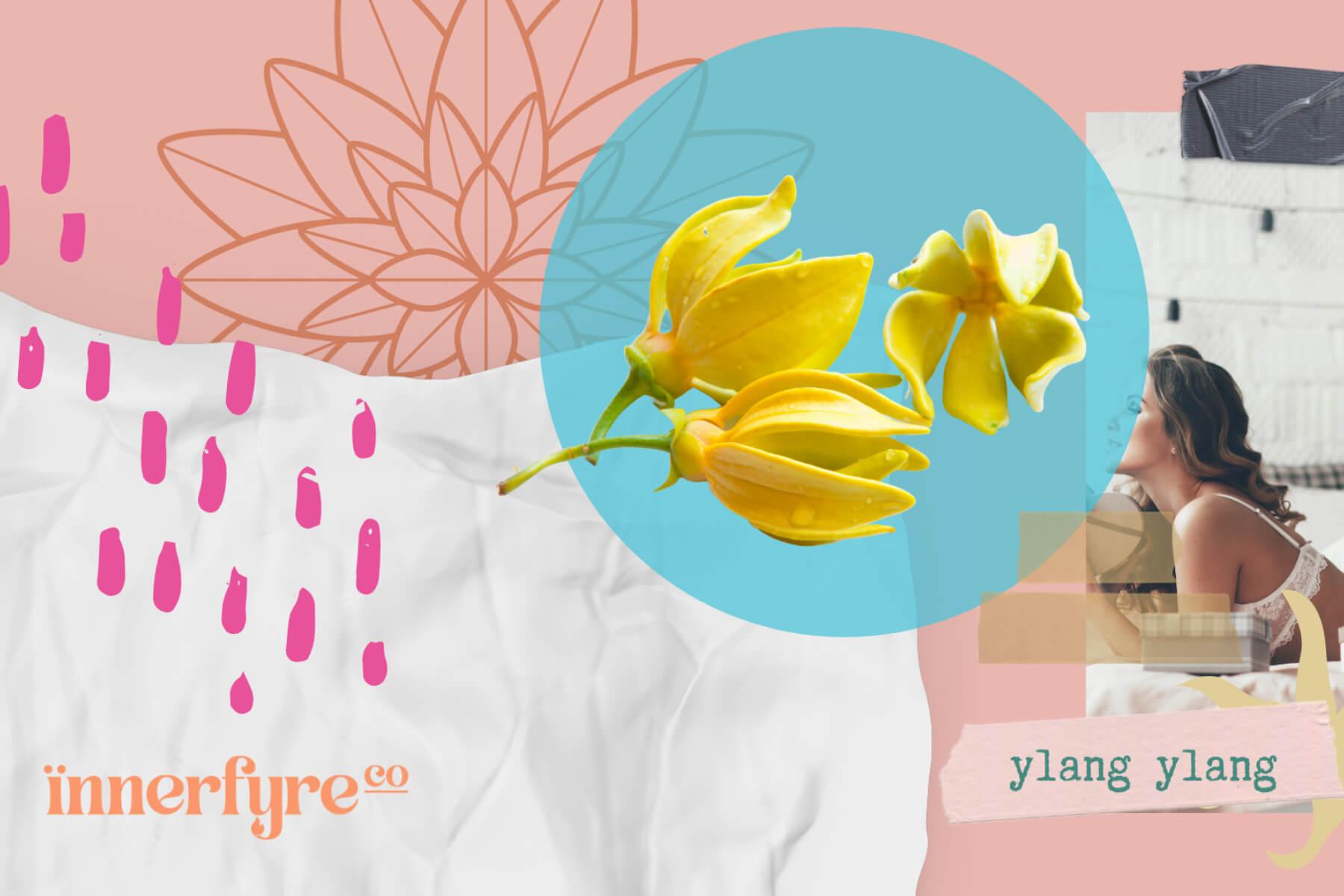
Ylang-Ylang Essential Oil- Benefits, Uses, and Origin
Ylang-ylang's exotic, invigorating scent has brought it to fame in perfumery. But this flower has long been a source of health benefits. Ylang-ylang essential oil contains antioxidants, antimicrobial, antifungal, and anti-inflammatory, and other medicinal properties on top of its aromatherapeutic ones.
Ylang-ylang (Cananga odorata) is an evergreen tree that is native to Southeast Asia. Its unique fragrance became the signature component of “Coco” Chanel and Ernest Beaux’ Chanel No. 5, increasing its value and cultivation all over the region long before the first World War. Besides its worldwide use as perfume, the ylang-ylang oil is also used for its anxiety, tension, and shock-relieving properties.
The name “ylang-ylang” has many local meanings, including “flower of flowers” or “scent of scents”. While the ylang-ylang is native to Cambodia, Indonesia, Thailand, and other countries in Southeast Asia, the Philippines had the monopoly of its oil production for the European perfume industry during the Victorian epoch. After World War I, much of the plantations was destroyed and cultivation was transferred to other Pacific Islands such as the Comoros, which currently holds the greatest export production for the ylang-ylang oil.
Ylang-ylang Oil vs. Cananga Oil
Besides perfumery, ylang-ylang is well known for its use in aromatherapy. The dull-colored flowers emit an intensely sweet floral fragrance. Ylang-ylang smell like jasmine oil to some. Unknown to many, two varieties of Cananga trees produce two different oil types: the ylang-ylang oil and Cananga oil. The ylang-ylang essential oil is the most potent oil used as the top note in perfumes and is distilled into varying grades, depending on its other uses. The Cananga oil is the less intense essential oil used as medium-to-base notes in lotions, food flavoring, and soap.
Ylang-ylang essential oil’s powerful scent can be mellowed down by mixing it with bergamot essential oil or sandalwood essential oil.
Ylang-Ylang Essential Oil Components
The plant is famously known for its sedative, relaxing, and harmonizing effects. Its essential oil was found to contain linalool, which is responsible for its signature ylang-ylang smell and for reducing systolic and diastolic blood pressure in humans. The ylang-ylang oil also contains linalyl acetate and other volatile compounds that perform anti-inflammatory activities, making it an effective option to soothe the effects of rheumatism and arthritis.
Traditional Uses of Ylang-Ylang
Polynesians used ylang-ylang flowers to enhance the fragrance of coconut oil during massages in the South Pacific Islands. The flowers were also traditionally used for cosmetics and hair care treatments; in fact, a popular hair pomade called Macassar Oil was developed in the Molucca Islands.
The ylang-ylang flowers were also used to treat asthma, whereas the bark was used to treat pneumonia and stomachache by traditional healers from the Northern Mariana Islands. In Indonesian wedding traditions, ylang-ylang flowers are sprinkled on the bed of newlywed couples as they are believed to have aphrodisiac properties.
Uses of Ylang-ylang Essential Oil
The ylang-ylang essential oil derived from the plant’s star-shaped flowers is commonly used in perfumery and aromatherapy. However, the use of ylang-ylang oil has increased considerably, making it an invaluable and sought-after product worldwide.
To reduce anxiety and depression
The sedative properties of ylang-ylang essential oil are found to reduce blood pressure when inhaled, which results in decreased pulse rates and stress levels. Applying the oil directly to the skin also helps induce calm and relaxation, which uplifts the mood. Blending lavender and cypress oil with ylang-ylang oil on a diffuser helps give off a relaxing effect after a long and tiring day.
To help with premenstrual syndrome
Ylang-ylang essential oil’s relaxing properties also help reduce mood swings and cramps associated with premenstrual syndrome. A massage blend can be applied to the lower abdomen and back to ease cramps and muscle stiffness.
Improves focus through “harmonization”
Although used frequently as a sedative, the ylang-ylang has a calming effect without inhibiting cognitive performance. One study found that inhaling ylang-ylang oil increased the attentiveness of test subjects, which is characterized as “harmonization”.
Defense against fungi and bacteria
Ylang-ylang essential oil has been proven to work against some bacterial strains such as Staphylococcus aureus. Hence, ylang-ylang is used in several cultures to treat minor cuts and burns. Combined with other oils such as lavender essential oil and sage, the ylang-ylang oil is also potent against Escherichia coli and Candida albicans, which is the most prevalent cause of fungal infection in humans.
As antioxidant
Antioxidants are substances that prevent or slow down cell damage caused by unstable molecules called “free radicals”. The ylang-ylang oil is a good source of antioxidants, making it a popular component of cosmetic products that improve uneven skin tones when used properly.
As a remedy for inflammatory diseases
Inflammatory diseases such as rheumatism, arthritis, and pelvic inflammatory disease are major health concerns that often require steroidal drugs to be treated. However, these drugs have serious adverse effects, so ylang-ylang essential oil is a welcome alternative. The linalool and other volatile compounds found in ylang-ylang oil have been shown to significantly reduce inflammation in several experiments.
As insect repellent
The ylang-ylang oil is an effective repellent against mosquitoes including those that cause dengue and malaria. Compared with other essential oils, the ylang-ylang was also found to be the most potent repellent against red flour beetles, which are pervasive pests in stored products such as rice and flour.
Improves skin and hair health
The ylang-ylang essential oil is also known to balance oil production in the skin, which prevents dryness and oiliness. By soothing inflammation and irritation on the skin and scalp, the ylang-ylang oil prevents dandruff and acne breakouts while maintaining hydration.
Safety and Precaution Tips
The popularity of ylang-ylang essential oil for its health benefits has increased in the past years. However, precaution should still be observed when using them. Some of the common side effects of ylang-ylang oil use include sensitization, rashes, headache, and nausea.
As the oil may affect certain hormones, it is important to consult medical practitioners before using the ylang-ylang oil, especially for pregnant and nursing women.
It is important to perform a skin patch test before using the ylang-ylang essential oil. This is done by mixing one drop of the essential oil with four drops of carrier oil and applying a dime-sized amount in a non-sensitive area. Ylang-ylang oil must never be used near the eyes, inner nose, ears, and other sensitive areas of the skin.
Those seeking medication and therapy for mental health conditions must keep in mind that essential oils are merely complementary remedies and are not to become the replacement for medical treatments or prescriptions.
Parents are advised to keep ylang-ylang oils away from children’s reach. It is also not advised to use ylang-ylang oil for children below six years of age.

